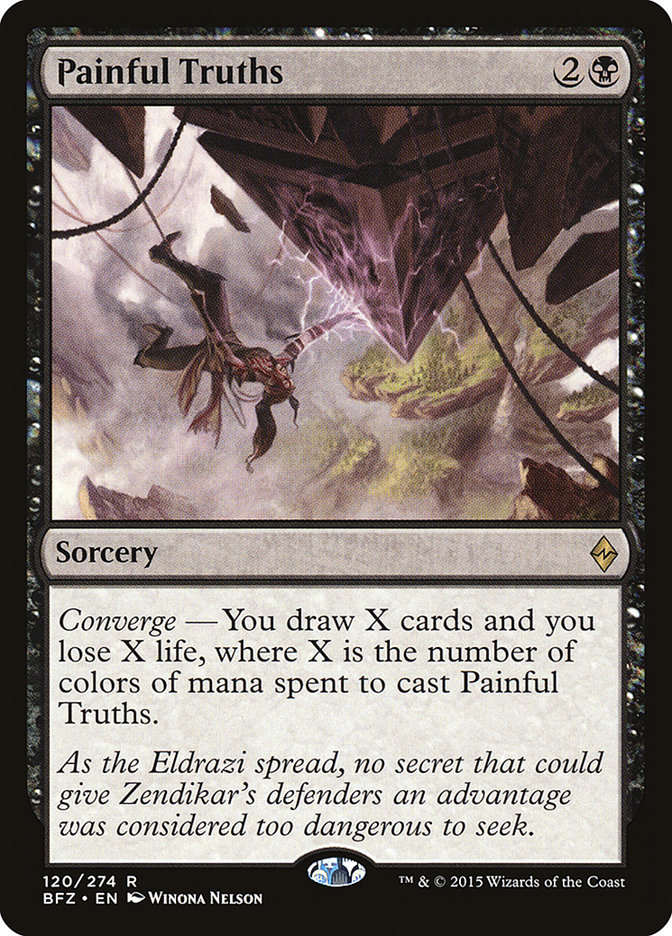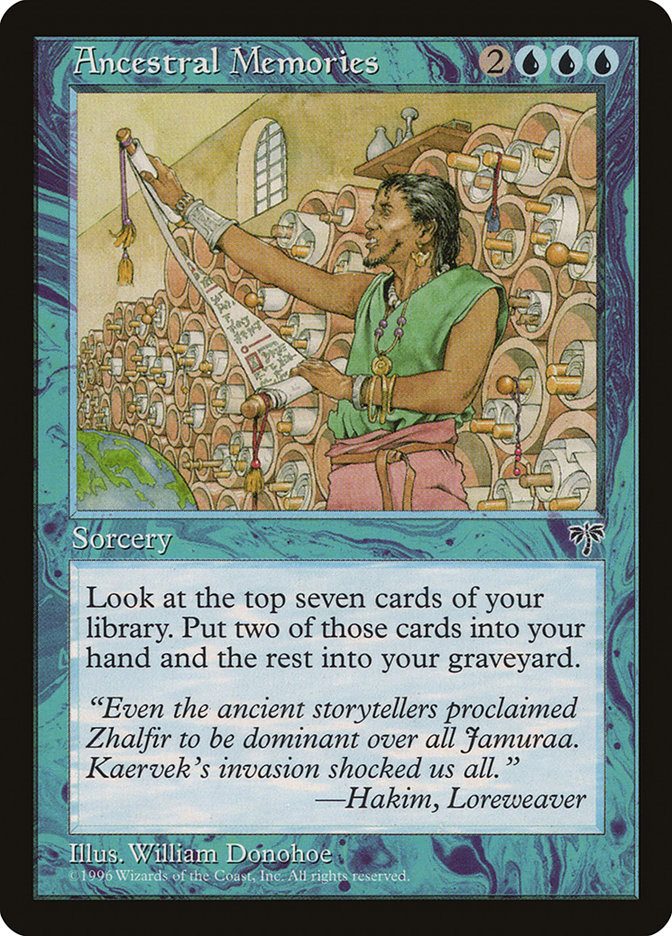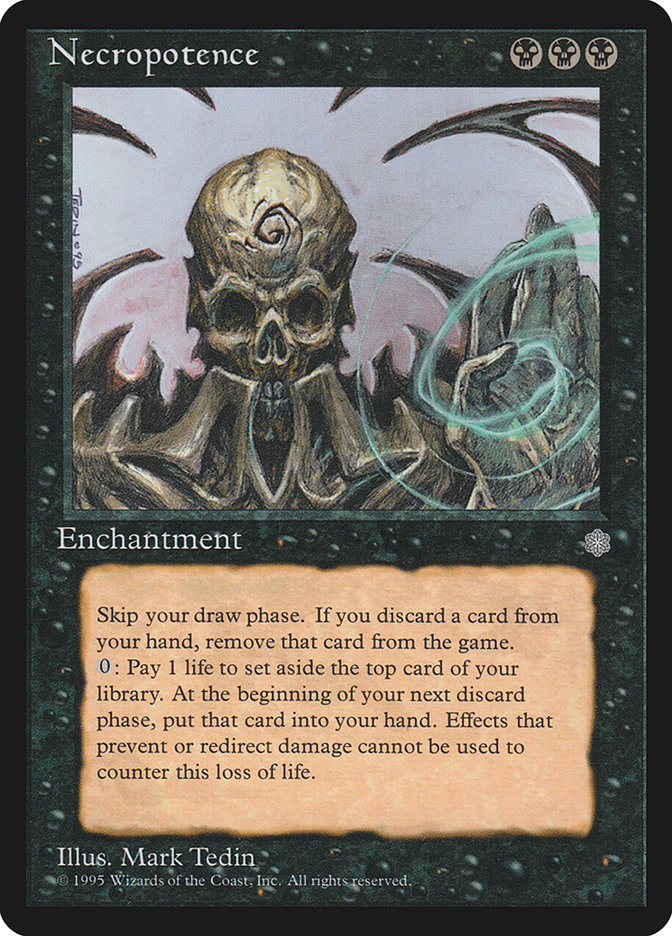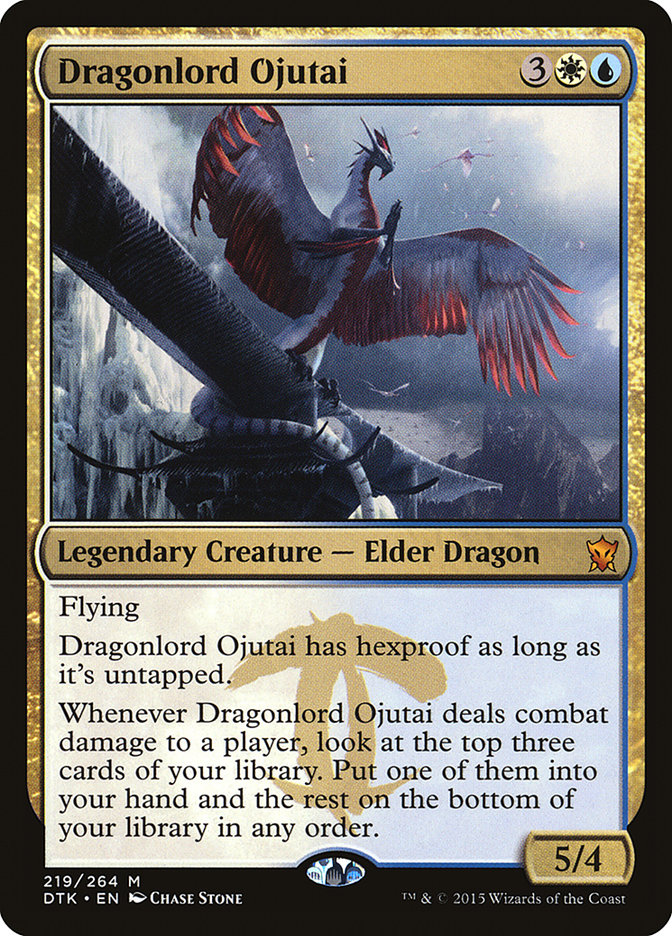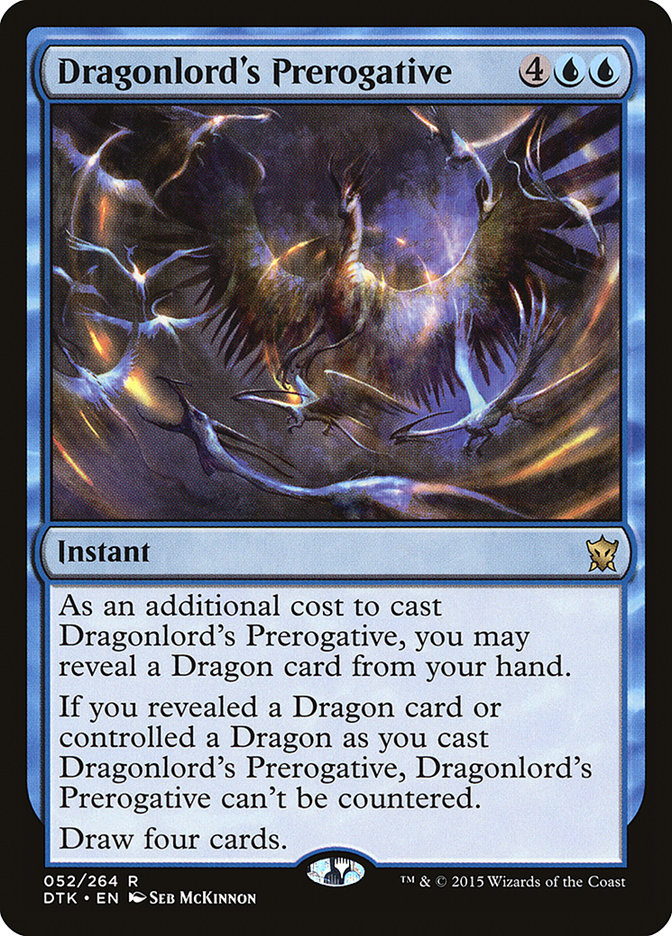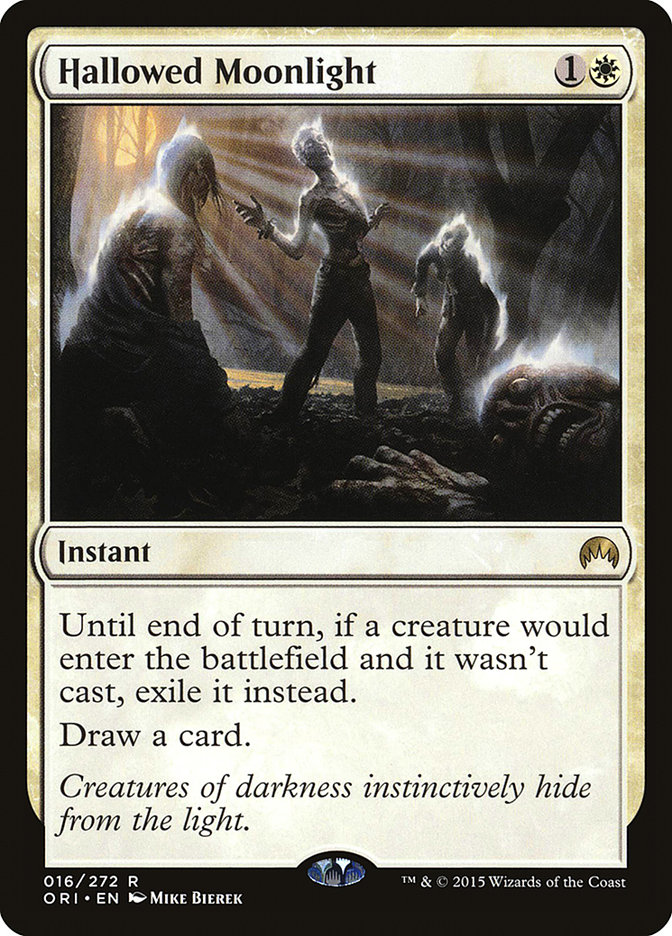If you’re like me at all, perhaps you’ve learned The Truth.
Last month, I talked about playing the Painful Truths mirror.
At the time, what I was referring to was various forms of “not green” decks (mostly what is being called Mardu Blue or Jeskai Black, depending on the
details). For a long while now, this has been my go to deck on Magic Online, and it has been playing really well.
It has been playing really well, that is, except in the most recent days.
Again, if you’re like me, now that you’ve seen The Truth, you’ve noticed everyone else has come to learn The Truth as well.
More and more, I’ve seen two major developments: every deck that can reasonably support Painful Truths doing so, or decks choosing to go after people who
are using their life total as a resource. This has made The Truth a little bit less truthy.
Now, I don’t like losing, but I don’t mind losing a lot if I feel like I’ve learned something. As I was contemplating the shellacking I’d been getting with
my trusty version of Mardu Blue, I thought back to a match where I was utterly destroyed in Vegas at #SCGINVI. Here was the deck I was playing:
Creatures (11)
Planeswalkers (1)
Lands (26)
Spells (22)

While I did end up placing higher than my opponent who beat me, I have to tell you, things felt utterly miserable. So, what was he playing?
Esper Dragons. Dragons with The Truth.
While I’m still not 100% sold on the exact 75 cards that I played in Vegas for the final SCG Open, moving forward into the SCG Tour®, I think the basics of
the deck are actually quite excellent. I built the deck with the intention of essentially being the deck I kept boarding into for the many previous weeks
of playing the deck.
My opponent in that decisive match of Magic, though, just felt like they were outmaneuvering me on every front.
Here was the problem: They were a Duress-based Painful Truths deck that ran very high on the control end of the spectrum versus my midrange control deck.
Whereas in the past, what I’d have generally done to an opponent like this is just push them over with a few Painful Truths and outpower the more powerful
deck because they weren’t running Painful Truths.
When I analyzed the Jeskai Black/Mardu Blue/”not green”
mirror, one of the things that I had learned was that adapting the deck to be more aggressive with Monastery Mentor did not actually do much to
help win the near-mirror. Ultimately, both players had enough answers to drag the game long, and thus whoever had the most of those types of cards would be
more likely to start to steamroll the opponent.
So it was with Mardu Blue versus Esper Dragons once Dragons knew The Truth.
We were fighting a Jace fight, and yet, because I was not the more controlling deck (and couldn’t hope to be), my Jace answers would quickly turn to
liabilities in the game that had slipped away on another axis. On the other hand, my opponents’ Jace answers were solid, because they served to delay the
game further.
We were fighting a Painful Truths fight, and yet, while I had some countermagic and discard, my opponent had just as much discard, more countermagic, and
far, far more card draw, adding Dig Through Time to Painful Truths. If you recall the feeling of a first Dig Through Time resolving in any of the U/B(/x)
mirrors of last year, you know how painful and horribly hopeless this feels. After all, there was a time, a million years ago, when these two cards
competed in the most competitive Type 2 decks (the precursor to Standard):
In any game that is sitting in a neutral or near-neutral state, Dig Through Time can lock it down. In the Mardu Blue/Esper Dragons match, getting to this
state was actually one of the most likely results of both the midgame, or of me successfully fighting back against Esper Dragons taking over. And
before, where I had Painful Truths to just run away with it, now they did as well.
Finally, Esper Dragons was still a Dragon deck. This meant that for that matchup, there was this monster to contend with:
With a card like Dragonlord Ojutai to contend with, there were some difficult questions. While Ojutai’s Command, ironically, was still a good fit, was
trying to fight a resolved Dragonlord really a decent plan? For the most part, these cards were horribly situational or simply weak. Then, while I
didn’t mind the idea of attempting to preemptively fight the fight with cards like Transgress the Mind or Infinite Obliteration, the fact is, they were
still more prepared to fight those fights than I was.
I lost two games in Vegas, and they felt like such utter trouncings, I was glad to say to myself, “well, thankfully that deck can’t be that great
in Magic right now!” And, of course, it got 2nd at the #SCGINVI.
It wasn’t the same deck exactly. But it was still thrashing Mardu Blue.
Here is that second place deck from Vidianto Wijaya:
Creatures (10)
Planeswalkers (1)
Lands (26)
Spells (23)

When I was talking to Patrick Sullivan during one of his breaks of the weekend, he told me that it looked like Vidi’s deck was just whirring. Looking at
it, I’m not surprised. It’s a very streamlined deck that keeps it simple: draw the cards, kill the things, counter the spells, repeat.
If there was anything to say about Vidianto’s deck that I didn’t like, it was just this: 26 land felt pretty light.
When I shared all of my blue decks, three of
them had 27 land and one of them had 28. Running as few as 26 land seemed a bit insane to me. Here is the difference in what Vidianto played and
the list I published.
I ran:


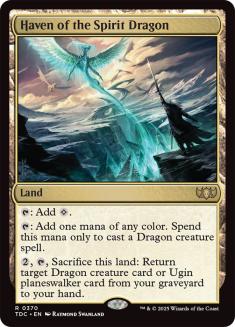
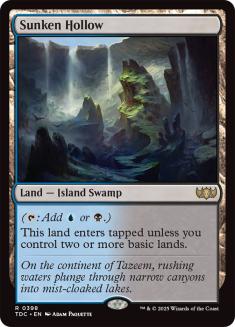


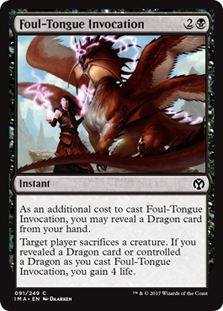
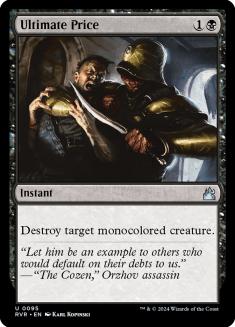


Vidianto ran:

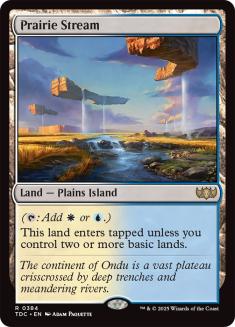
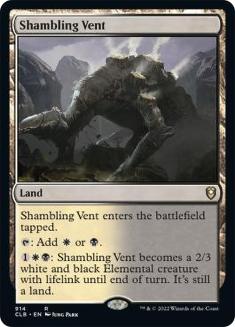
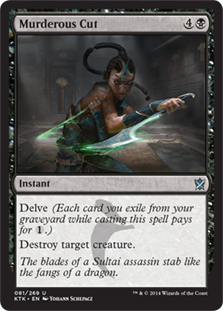

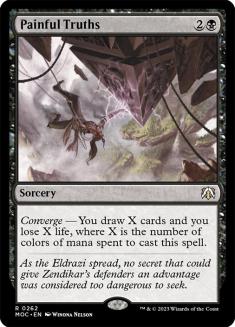




As a bona fide Ugin-lover, I am ecstatic to see the card in his list. I can understand some of the minor differences in the lands, as well. The core of
this deck is just a strong, powerful thing that can be frightening beyond belief.
So while it is only anecdotal, watching Vidianto Wijaya play Caleb Scherer
in the finals of #SCGINVI in Vegas last month, I couldn’t help but note the major mana issues that Vidianto seemed to keep having. Running a
little light on mana can be a forgivable thing in a deck with a lot of card draw. You can expect that the extra card draw will pull you out of problem
situations. All of this, of course, requires a little bit of cooperation from your opponent, where they agree (intentionally or not) to give you that time.
Here is what Caleb played:
His opponent, Caleb Scherer, would go on to win the match 3-1 playing a well-honed Abzan Aggro list that wasn’t prone to giving the opponent much time.
Among the many weapons it could bring to bear after sideboard, there were these cards:


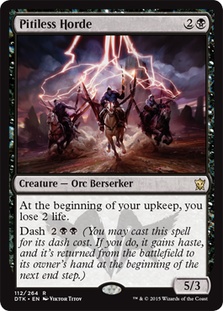







This is, of course, in addition to being able to simply position itself as a powerful aggressive deck. Even with only a pair of Painful Truths, access to
The Truth is truly an absurd thing for a midrange deck like this that can put on the pressure. Your more controlling opponent, whether they are a Mardu
Blue deck or a deck like Wijaya’s Esper Dragons, is likely to tap down to maintain their life total. This opens the door for the refill from Painful
Truths, which can keep your opponent from being able to just weather the storm then shut the cellar door.
Of course, it is also important to think about the power of Pitiless Horde.
The worst way to play it is to simply cast it on turn 3, but even that is pretty great when you’re the aggressor. Better is to dash the Orc Berserker to
get in an extra boost of five damage that couldn’t easily be planned for.
While Caleb didn’t “discover”
Pitiless Horde, he made use of the exciting positioning of the card right now. Pitiless Horde isn’t just a good card against the more controlling decks,
forcing them into having specific answers when they might not have them and pressuring the life total, in a world of The Truth, Pitiless Horde can often
simply not care about your card advantage because it is going to work to pressure your life total that is already under pressure from your own actions.
Now, all of this is not to say that Vidianto Wijaya made a bad choice with his deck for #SCGINVI. That would be foolish. One of the reasons that I very
much like his deck choice is that it pushes against a potential field of midrange-based Painful Truths decks and punishes them for being less, shall we
say, aggressive about their dedication to controlling the game. In fact, if someone isn’t punishing you for a light mana base, running one less
land is actually a huge advantage, as you’ll likely have the time to recover, and your chances of flooding out are greatly diminished. Against most Mardu
Blue decks, with practically no early game, this is likely a great decision.
Of course, it isn’t just Pitiless Horde that has been making a comeback.
In the last weeks, I’ve seen an uptick in cards designed to punish people for casting Painful Truths.
Impact Tremors is the one I’ve been seeing the most of.
So, perhaps I’m just being wildly conservative, but I want to revisit Esper Dragons, informed by Vidianto Wijaya’s choices, but also adding a bit of mana
to the mix and, at least in the first game, trying to diminish some of the painful costs of The Truth. What it boils down to is simple: I just don’t want
to die out of greed.
For me this means a few things: more land, more removal that can affect enemies hoping to exploit Painful Truths opponents, and a concession to fear (but
hopefully not The Fear).
My changes from the runner-up list from Vegas are pretty modest.
In the main, I play:




I drop:




That’s almost nothing. If I were to be a bit more conservative, I’d even cut the Ugin, the Spirit Dragon, and maybe I should, but I really love the card as
a trump. I have had a lot of success with the card, especially in a world of Gideon, Ally of Zendikar.
There is a part of me that has started questioning whether or not Scatter to the Winds is even necessary right now, but ultimately, I have really liked
having an extra hard counter. Aside from Ugin, the Spirit Dragon, Scatter is the only card that really feels like it could easily be touched.
I have more changes for the sideboard, but nothing too crazy:
I add in:
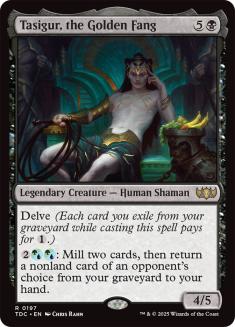
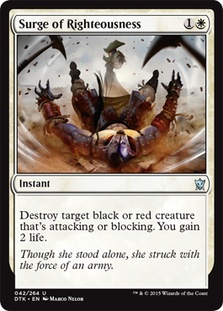

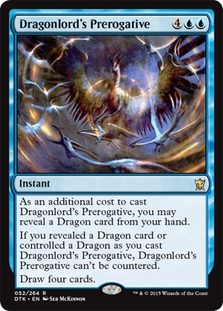


I drop:
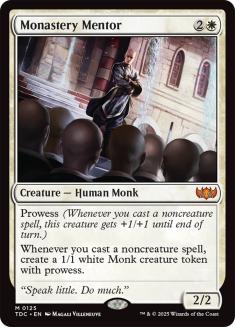
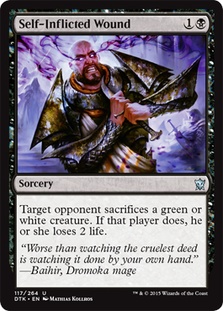

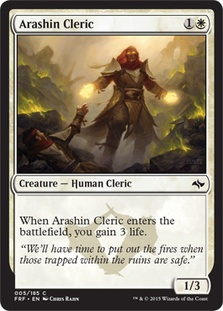


I basically have no faith in Arashin Cleric, especially in a deck that plays black, and especially in a deck that doesn’t play Ojutai’s Command. I
am not at all impressed by the card as a means to stop the aggressive decks, and I’d much rather have the “real” Arashin Cleric: Tasigur, the Golden Fang.
In my Mardu Blue deck, three Tasigur, the Golden Fang and two Surge of Righteousness are a part of the plan to defeat red-based decks. I’m still early in
my testing, and it might actually be the case that the deck needs a third Surge of Righteousness since it doesn’t have the early red removal or Soulfire
Grand Master. To hedge on that, I’m also running the fourth Foul-Tongue Invocation, which happens to do a nice Self-Inflicted Wound impression against a
lot of decks.
Someone asked me why I didn’t have the missing third Painful Truths in the board. Really, though, I do have it, just as an absurd card called
Dragonlord’s Prerogative. While Painful Truths is an incredible way to fight out of a mulligan, once you start looking at it as a board card, Dragonlord’s
Prerogative simply feels like the more powerful alternative. It could well be that time will make me shift back to that third Painful Truths, but for now,
I’m running the instant.
I’m still flirting with Hallowed Moonlight as a potential board card, but I haven’t yet pulled the trigger. If your meta is chock full of Rally the
Ancestors, consider it more strongly.
Standard is soon to shift, but whether it is at the Standard Classic at #SCGCHAR or an event local to you, I think this would be a great choice for anyone
who is looking to have a leg up on all of the Mardu Blue/Jeskai Black decks and yet is not interested in getting torn apart by the more aggressive decks.
I won’t be at the SCG Tour® in Charlotte nor at #GPOAK this weekend. However, I have a lot planned for 2015 and Magic, and I’m excited for the coming year!
As always, if you try out a deck of mine, I always love hearing from you. Good luck!

